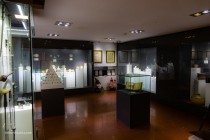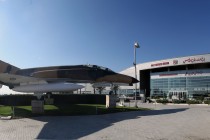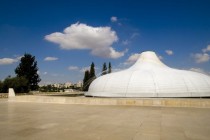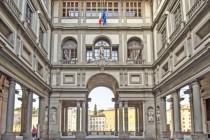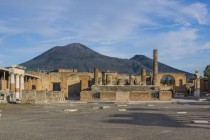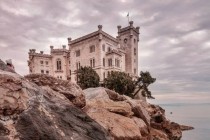| India |
Agra |
Taj Mahal |
98. |
373 |
|
|
Mausoleum
|
More |
Taj Mahal (Taj Museum inside Taj Mahal Complex founded in 1906).
Taj Mahal is a mausoleum built in 1632–53 by the Mughal emperor Shah Jahan to house the tomb of his prematurely deceased beloved wife, Mumtaz Mahal. It covers an area of 17 hectares.
|
| India |
Bhopal |
Indira Gandhi Rashtriya Manav Sangrahalaya |
189. |
185 |
|
|
National - anthropology,... ethnography
|
More |
Indira Gandhi Rashtriya Manav Sangrahalaya (IGRMS) or National Museum of Mankind, an autonomous organisation of the Ministry of Culture, Government of India, began functioning in March 1977 to present the living vulture of the diverse culture of communities across India. It has a regional Centre in Southern India at Mysore that started functioning in October 2001 from a heritage building 'Wellington House' allotted by the Government of Karnataka.
The mandate of the Museum includes the presentation of an integrated story of the bio-cultural evolution of humankind through outdoor and indoor exhibitions by highlighting the richness and diversity of cultural patterns of India and its underlying unity; to act as a Centre of research and training in museology and generate a new museum movement in India and to present and preserve a variety of cultural life.
IGRMS is also working for national integration, and promoting research & training and inter-organizational networking for salvage and revitalisation of vanishing, but valuable cultural traditions. The innovative aspects of the organization are its open-air and indoor exhibitions, built with the active involvement of traditional artisans and experts drawn from different community groups, and the education, outreach & salvage activities in different parts of the country.
Through its exhibitions, education programmes and salvage activities, IGRMS demonstrates the aesthetic qualities of India's traditional lifestyles, and the continued relevance of local traditional knowledge and mores of people to the modern society and cautions the people against unprecedented destruction of ecology and environment, local values and customs.
The programmes and activities of the organisation are carried out under three sub-schemes namely:
1. Infrastructure Development : (Development of Museum Complex),
2. Education and Outreach Programme,
3. Operation Salvage.
|
| India |
Delhi |
Red Fort |
215. |
226 |
|
|
Historic house,... monument
|
More |
Red Fort (Lal Qila) was the main residence of the Mughal emperors built between 1638 and 1648 in the style of Indo-Islamic architecture.
Main objects:
- Lahori Gate
- Delhi Gate
- Diwan-i-Khas (Hall of Private Audience)
- Moti Masjid (Pearl Mosque)
- Naubat Khana ("Waiting Hall")
The Red Fort has:
- Drishyakala Museum (art)
- Red Fort Archaeological Museum
- Indian War Memorial Museum
The Red Fort has an area of over 103 hectares.
|
| India |
Hyderabad |
Salar Jung Museum |
295. |
229 |
|
|
National - art
|
More |
The Salar Jung Museum (SJM) was inaugurated in 1951.
SJM has artifacts from all over the world (33 countries) since the 2nd century BC until the beginning of the 20th century AD. These include the jade daggers of Jahangir and Shah Jahan, miniature paintings belonging to the Mughal and Rajasthani schools, probably the largest collection of "Bidri ware" in the world, the sculpture "Veiled Rebecca" by Giovanni Maria Benzoni, samurai swords, personal collection of the Salar Jung family, collection of the Koran, collection of clocks.
In 1961, SJM was declared a national museum.
The entire collection includes approximately 1.1 million artifacts.
|
| India |
Kolkata |
Indian Museum |
155. |
168 |
|
|
Natural history,... anthropology, archeology, art
|
More |
The Indian Museum founded in 1814.
Its collections include geology, botany, zoology, anthropology, archeology (including ancient Egypt) and Indian art (such as Mughal paintings).
There are over 1,000,000 exhibits in total.
|
| India |
Mumbai |
Chhatrapati Shivaji Maharaj Vastu Sangrahalaya |
326. |
238 |
|
|
History, art, archeology,... natural history
|
More |
Chhatrapati Shivaji Maharaj Vastu Sangrahalaya (CSMVS) opened to the public in 1922.
The museum houses over 50,000 artifacts from India, China, Japan and Europe.
The museum documents the history of India from prehistoric times to the present day. The museum houses artifacts of the Indus Valley civilization and other relics from ancient India from the times of the Gupta, Maury, Chalukyas and Rashtrakuta; paintings of the major Indian schools of Mughal, Rajasthani, Pahari and Deccani; manuscripts from all over the last millennium; arts and crafts of ivory, jade, silver and gold.
|
| India |
Mysore |
Mysore Palace |
182. |
593 |
|
|
Historic house
|
More |
The Mysore Palace was the official residence of the Princely State of Mysore.
The palace was built in the years 1897-1912 in the Indian-Saracenic style.
Palace dimensions; length 74.7 meters, width 47.5 meters, height 44.2 meters.
The Residential Museum is located in the palace complex.
In the palace, you can see, among others: a jeweled golden throne and a golden howdah (elephant seat).
|
| India |
New Delhi |
National Museum of India |
126. |
243 |
|
|
Art, archeology,... anthropology, history
|
More |
National Museum of India founded in 1949.
Its collections include artifacts covering over 5000 years of history, from the prehistoric era to modern works of art. The museum has 206,000 objects in its collections.
It is divided into collections:
Pre - Histroic Archaeology
Archaeology
Anthropology
Paintings (mainly miniature painting)
Arms & Armour
Central Asian Antiquities
Decorative Arts
Manuscripts
Numismatic & Epigraphy
Pre-Columbian & Western Art
|
| India |
New Delhi |
Kiran Nadar Museum of Art |
341. |
458 |
|
|
Modern and contemporary... art
|
More |
Established through the initiative of avid art collector Kiran Nadar, the Kiran Nadar Museum of Art (KNMA) opened to the public in January 2010 as India’s first private museum dedicated to modern and contemporary art from the subcontinent. KNMA is a non-commercial, not-for-profit institution supported by the Shiv Nadar Foundation. It seeks to foster a dynamic relationship between art and culture through its exhibitions, publications, educational initiatives, and public programs. Committed to institutional collaborations and artist support networks, KNMA actively engages with diverse audiences through its wide-ranging programming.
The museum’s ever-expanding collection of over 15,000 artworks from South Asia features some of the most significant modernist and contemporary works. Now broadening its scope to include classical, folk, and tribal art, the collection spans historical trajectories from the 3rd century BCE to 20th-century Indian art, alongside the experimental practices of young contemporaries.
KNMA is set to evolve into a landmark cultural destination with a new location, an expansive 100,000-square-meter (over 1 million square feet) architectural marvel, near the Indira Gandhi International Airport, New Delhi. It will feature multiple exhibition spaces, a performance arts centre, an education block, an archive centre, a library, restaurants, and a members’ room. Strengthening its role as a cultural epicenter, this expansion will further KNMA’s mission to be a vibrant hub for visual and performing arts, fostering artistic innovation and cultural dialogue.
|
| Indonesia |
Jakarta |
National Museum of Indonesia |
278. |
264 |
|
|
Archeology, anthropology,... ethnography, art
|
More |
The National Museum of Indonesia (MusNas) dates back to 1778.
Museum collections of archeology, ceramics, ethnography, numismatics cover almost the entire history of Indonesia. Particularly noteworthy are the collection of stone statues from the classical Hindu-Buddhist period of ancient Java and Sumatra and the collection of Chinese ceramics dating from the Han (2nd century BC) to Qing times (18th century).
MusNas stores nearly 200,000 artifacts in its collection.
MusNas covers an area of 26,500 square meters.
|
| Indonesia |
Jakarta |
Jakarta History Museum |
317. |
187 |
|
|
History
|
More |
The Jakarta History Museum (Museum Sejarah Jakarta or Museum Fatahillah or Batavia Museum) was inaugurated in 1974.
The museum presents the history of the development of the city of Jakarta from prehistory to the present day. Its collections include, for example, objects related to the history of the Dutch East-India Company (VOC), Japanese ceramics from the 17th century, Batavia furniture, 17th-19th century, which is a combination of European, Chinese, Indian and Indonesian styles.
The collection includes nearly 25,000 artifacts.
|
| Indonesia |
Magelang |
PT Taman Wisata Candi Borobudur, Prambanan, dan Ratu Boko |
101. |
177 |
|
|
Temple, national
|
More |
PT Taman Wisata Candi Borobudur, Prambanan, dan Ratu Boko (commonly abbreviated TWC) founded in 1980 is a state-owned company that deals with the management of tourist facilities.
PT TWC manages primarily:
- Borobudur - the largest Buddhist temple complex in the world, built between 750 and 850 CE
There are three museums in the Borobudur Temple Visitor Park area: Museum Borobudur, Museum Karmawibhangga, and Museum Samudraraksa.
- Prambanan - a Hindu temple complex originally built in 850 CE
- Ratu Boko - palace complex from the 8th and 9th centuries
- Taman Mini "Indonesia Indah" (TMII) covers an area of approximately 100 ha and consists of:
Indonesia Museum
Purna Bhakti Pertiwi Museum
Soldier Museum
Indonesian Stamps Museum
Pusaka Museum
Transportation Museum
Museum Electricity & New Energy Museum
Telecommunication Museum
Penerangan Museum
Sports Museum
Asmat Museum
Komodo Indonesian Fauna Museum and Reptile Park
Insects Museum
Research & Technology Information Center
Oil & Gas Museum
East Timor Museum
Museum Bayt Al-qur'an Dan Museum Istiqlal
Museum Hakka Indonesia
|
| Indonesia |
Surakarta (commonly called Solo) |
Danar Hadi Batik Museum |
393. |
283 |
|
|
Batik
|
More |
The Danar Hadi Batik Museum, also known as the House of Danar Hadi (HDH), was founded in 2008.
Next to the HDH is the Danar Hadi Ancient Batik Museum (Museum Batik Kuno Danar Hadi), opened in 2002, which stores at least 10,000 pieces of batik clothes and is one of the largest batik collections in Indonesia. About 1,000 batiks are on permanent exhibition. They come from different regions throughout Indonesia and from different cultural influences and periods (from the 18th century to the present day), such as Chinese, Indian, Dutch, as well as from different regions throughout Indonesia.
|
| Iran |
Shiraz |
Jondishapour Museum of Trade History |
412. |
516 |
|
|
Trade and history
|
More |
Jondishapuor Museum of Trade History was established in 2018 in Shiraz, Iran with the permission of the Ministry of Cultural Heritage and Tourism and Handicrafts. The most important of establishing the museum was Owner extreme passion to Iran and preservation of ancient history of this great country through presenting museum items. Since one of the most important tasks of museum in general is to display and preserve work of collections and offering related specialized trainings, the owner and founder of Jondishapour Museum decided to employ experts in the field of exhibition as well as restoration of historical monuments so that he could provide a secure reservoir with high-tech equipment and establish the first private restoration workshop with modern materials and equipment in Shiraz This Museum was honored as the best museum in Iran under the category of conservation & preservation indexes by the ICOM- Iran. Jondishapour Museum of the Trade History houses a treasure trove of valuable historical artifacts, inchuding metals. Potteries, ghassware, manuscripts, stamps, coins, antiques, ets.
|
| Iran |
Tehran |
National Museum of the Islamic Revolution & Holy Defense |
378. |
230 |
|
|
Military
|
More |
National Museum of the Islamic Revolution and Holy Defense revolves around a series of concepts from the beginning of Iran's history until present times; the first hall is exclusively about the Islamic revolution and the next six ones are related to the Holy Defense (Iran-Iraq war 1980-1988). Through the use of visual and conceptual media, these halls display the chronology of developments in Iran and present a totally new definition of the concept of museums.
|
| Ireland |
Dublin |
National Museum of Ireland |
253. |
234 |
|
|
Archeology, natural... history, history, decorative arts, country life
|
More |
The National Museum of Ireland (NMI) was established in 1877 as a state museum.
The exhibits collected in the museum come from prehistoric times to the present day, including: gold products from the Bronze and Iron Ages, early medieval Celtic metalwork (e.g. the Derrynaflan treasure), items from the Viking and Middle Ages, well-preserved marsh bodies and the Ralaghan Man, extinct mammals, contemporary design.
NMI has four branches.
The entire collection includes almost 4,000,000 items.
|
| Ireland |
Dublin |
National Gallery of Ireland |
307. |
199 |
|
|
National - art
|
More |
The National Gallery of Ireland opened to the public in 1864.
It has collections of European and Irish art in its collection. It includes the works of, among others Titian, Rembrandt, Caravaggio, Velázquez, Rubens, van Dyck, Reynolds, Delacroix, Monet, Picasso, Jack Butler Yeats.
The entire collection comprises approximately 14,000 works of art, including approximately 2,500 oil paintings, 5,000 prints and 5,000 drawings.
|
| Ireland |
Dublin |
Guinness Storehouse |
398. |
209 |
|
|
History of brewing
|
More |
The Guinness Storehouse opened to the public on December 2, 2000. The building it is located in dates back to 1904 and was originally used as a fermentation warehouse at the Guinness brewery.
The Guinness Storehouse is an interactive museum dedicated to the history and heritage of the Guinness brand. The museum creates a fascinating story about the over 250-year-old tradition of one of the most recognizable beers in the world. Its collection includes a number of exhibits that show the beer brewing process, the history of the brewery and the brand's influence on culture and advertising. The highlights of the exhibition include:
1. Guinness History: Exhibits illustrating the brewery's origins from its founding by Arthur Guinness in 1759, including the original 9,000-year lease.
2. Beer brewing process: Presentation of the individual stages of Guinness beer production, such as the selection of ingredients (water, barley, hops, yeast), fermentation, maturation and packaging.
3. Advertising and Marketing: A collection of posters, television commercials and other promotional materials that reflect the brand's iconic advertising campaigns over the years.
4. Gravity Bar: Located on the top floor of the building, the bar offers panoramic views of Dublin. This is part of an exhibition that shows how Guinness has become an integral part of the Irish landscape.
5. Interactive exhibitions: Guests can use various interactive stations that allow them to learn more about the beer brewing process and the history of Guinness.
Most of the exhibits you can see are items related to the history of the Guinness Brewery, such as:
- Old barrels, tools and equipment related to beer production.
- Historic Guinness beer bottles and labels.
- Advertising posters and original marketing materials.
- Copies of historical documents, including contracts and records relating to the brewery.
The Guinness Storehouse in Dublin covers an area of approximately 14,000 square meters. The exhibition area is approximately 5,000 square meters.
|
| Israel |
Ein Harod |
Mishkan Museum of Art Ein Harod |
394. |
265 |
|
|
Art
|
More |
The Mishkan Museum of Art Ein Harod was founded in 1937.
The museum has collections of Jewish art, Israeli art and Judaica.
Jewish art includes painting, sculpture, graphics and photography created in the second half of the nineteenth century and the first half of the twentieth century. These are works by, among others, Jozef Israëls, Leopold Horowitz, Mauricio Gottlieb, Shmuel Hirschenberg, Isidor Kaufmann, Max Liebermann, Yitzhak Levitan, Moïse Kisling.
The museum collection also includes works by contemporary Israeli artists who have been working since the beginning of the 20th century.
The Judaica collection includes religious utensils from the 18th century to the present day, from Jewish communities around the world.
The museum has collected over 16,000 works.
|
| Israel |
Jerusalem |
Israel Museum |
181. |
218 |
|
|
Art, archeology
|
More |
The Israel Museum founded in 1965.
It collects encyclopedic collections from prehistory to contemporary art.
Its collections include: Dead Sea Scrolls, works by Rembrandt, Peter Paul Rubens, Camille Pissarro, Auguste Rodin, Marc Chagall, Pablo Picasso, Henry Moore.
The entire collection has over 500,000 items.
The Israel Museum occupies an 8-hectare campus and the Rockefeller Archaeological Museum and the Ticho House.
Photo © Israel Museum, Jerusalem by Elie Posner
|
| Israel |
Jerusalem |
Yad Vashem |
217. |
197 |
|
|
Memorial
|
More |
Yad Vashem founded in 1953, open to the public in 1957 is the World Holocaust Remembrance Center. Yad Vashem commemorates the Righteous Among the Nations.
Yad Vashem is a complex with an area of over 18 hectares. It houses various museums, archives, research and education centers, monuments and memorials. Among others: Holocaust History Museum with a new Hall of Names and a Museum of Holocaust Art.
|
| Israel |
Tel Aviv |
Tel Aviv Museum of Art |
149. |
425 |
|
|
Art
|
More |
Tel Aviv Museum of Art was established in 1932.
It collects contemporary and modern art. Its collections include works by, among others: Gustav Klimt, Wassily Kandinsky, Pablo Picasso, Roy Lichtenstein, Henry Moore, Jackson Pollock.
|
| Italy |
Caserta |
Reggia di Caserta |
218. |
173 |
|
|
Historic house
|
More |
Reggia di Caserta - a royal palace, the construction of which began in 1752 for the Bourbon monarchy in the Later Baroque style and then continued in the Early Neoclassical style.
It is the largest palace built in Europe in the 18th century. By volume - 1 million cubic meters - it is by far the largest royal residence in the world. The dimensions of the palace are 247 × 184 × 42 meters. Occupied area of 235,000 square meters.
The palace is surrounded by 123 hectares of the Royal Park with numerous cascades and fountains. The Aqueduct of Vanvitelli, and the San Leucio Complex are located close to Reggia di Caserta. There is a Living Silk Museum in San Leucio with some original old looms and restored machinery showing all stages of silk production.
|
| Italy |
Florence |
Le Gallerie degli Uffizi |
21. |
2861 |
|
|
Art
|
More |
Galleria degli Uffizi was opened to the public in 1765.
Le Gallerie degli Uffizi consists of: Gli Uffizi, Corridoio Vasariano, Palazzo Pitti, Giardino di Boboli.
The gallery is divided into rooms with works of art representing, in chronological order, various schools and styles.
The pride of the gallery are paintings by Sandro Botticelli, Leonardo da Vinci, Rafael, and Titian.
|
| Italy |
Florence |
Galleria dell'Accademia |
62. |
435 |
|
|
Art
|
More |
Galleria dell'Accademia founded in 1784.
It is in possession of sculptures by Michelangelo (including the monumental statue of "David"), works of Florentine painters from 1300-1600 and collections of historical musical instruments made, among others, by Stradivarius.
|
| Italy |
Florence |
Fondazione Palazzo Strozzi |
384. |
201 |
|
|
Art
|
More |
Since 2006, the Fondazione Palazzo Strozzi (Foundation of the Palazzo Strozzi) has managed Palazzo Strozzi, a Renaissance private palace built between 1489 and 1538.
Palazzo Strozzi is the largest exhibition space for temporary exhibitions in Florence. Fondazione Palazzo Strozzi organizes several exhibitions every year dedicated to different aspects of art, creating a dialogue between the old and the new.
|
| Italy |
Milan |
Palazzo Reale di Milano |
269. |
171 |
|
|
Modern and contemporary... art
|
More |
Palazzo Reale di Milano (the Royal Palace of Milan) with medieval origins, renovated many times. In the years 1773-1778 restored in the Neo-Classical style, then the most famous interior of the Hall of the Caryatids (46 by 17 meters) was arranged, destroyed in 1943 during World War II.
In 1980, repair projects for the interior of the palace began in order to create a "Palace Museum", which, however, did not come into being. Currently, the Municipality of Milan organizes loud international exhibitions of modern and contemporary art in the palace. The Museum of the Duomo of Milan has been operating in the wing of the palace since 2013.
The palace covers an area of 7,000 square meters.
|
| Italy |
Naples |
Museo Archeologico Nazionale di Napoli |
321. |
235 |
|
|
Archeology
|
More |
The Museo Archeologico Nazionale di Napoli (MANN, National Archeological Museum of Naples) opened in 1816.
Main collections:
- Farnese collection, e.g. marbles the Farnese Hercules, the Farnese Bull, jewel collection,
- Ancient Roman artifacts from nearby Pompeii, Stabiae and Herculaneum, e.g. mosaics and the Secret Room,
- collection from the time of ancient Egypt.
The exhibition area is 12,650 square meters.
|
| Italy |
Pisa |
Opera della Primaziale Pisana |
140. |
182 |
|
|
Temple, art
|
More |
Opera della Primaziale Pisana (O₽A) is a secular-ecclesiastical body managing the complex of the Cathedral of Pisa. Its origins date back to 1063.
O₽A includes the Cathedral, the Leaning Tower of Pisa, the Baptistery and the Camposanto (monumental cemetery). As well as the Sinopie Museum (Sinòpia - a preparatory drawing applied to the first layer of plaster under the fresco), opened in 1979, and the Opera del Duomo Museum, opened in 1986, exhibiting the treasures of the cathedral and other finds excavated within the cathedral complex.
|
| Italy |
Pompeii |
Parco Archeologico di Pompei |
96. |
357 |
|
|
Archaeological park
|
More |
Parco Archeologico di Pompei has been operating under its current name since 2017.
Parco Archeologico di Pompei covers an area of 67 hectares of the ancient city covered with a layer of volcanic ash and pumice stone by the volcano Vesuvius during the eruption in 79 AD. At the Parco Archeologico di Pompei you can visit, among others: the Amphitheater, the Temple of Apollo, the House of Faun.
Foro © Silvia Vacca
|
| Italy |
Rome |
Parco archeologico del Colosseo |
118. |
215 |
|
|
Archaeological park
|
More |
Parco archeologico del Colosseo founded in 2017.
It covers the most important monuments and historical places of ancient Rome, among others: The Colosseum, The Palatine, Roman Forum, Arch of Constantine and Meta Sudans, The Domus Aurea.
|
| Italy |
Rome |
Museo Nazionale di Castel Sant'Angelo |
125. |
183 |
|
|
Mausoleum, history
|
More |
The Castel Sant'Angelo Museum opened in 1906.
The building of the current museum was built in 139 as the mausoleum of Emperor Hadrian. In the Middle Ages rebuilt into a fortress. In 1367, the keys to the fortress were handed over to the then Pope Urban V. Further popes carried out further reconstruction using the monument as a shelter in times of danger, archives, court and prison.
Museo Nazionale di Castel Sant'Angelo can be divided into 3 parts: mausoleum, fortified castle, papal apartments.
|
| Italy |
Rome |
Musei Capitolini |
330. |
182 |
|
|
Archeology, art
|
More |
The Musei Capitolini (Capitoline Museums) opened to the public in 1734. The Musei Capitolini are among the oldest museums in the world. The history of the museums dates back to 1471, when Pope Sixtus IV gave the people of Rome a collection of ancient bronzes and located them on the Capitoline Hill. Since then, the collection has been enriched with many ancient statues, works of medieval and Renaissance art, jewelry and coins.
The Musei Capitolini are located in Palazzo Senatorio, Palazzo dei Conservatori, Palazzo Nuovo, Palazzo Caffarelli, Galleria di congiunzione, Centrale Montemartini.
Some of the biggest attractions are the sculptures:
- Capitoline Wolf (5th century BC)
- Cupid and Psyche (3rd century BC)
- Dying Gaul (1st-2nd century AD)
- Equestrian statue of Marcus Aurelius (c. 175 AD)
- Bernini's Medusa (c. 1638-1648)
The Musei Capitolini has 12,977 square meters of exhibition space.
|
| Italy |
Trieste |
Museo Storico e il Parco del Castello di Miramare |
395. |
334 |
|
|
Historic house
|
More |
The Miramare Castle and park were commissioned by Archduke Maximilian of Hapsburg who decided—around 1855—to build a residence worthy of his name and rank outside of Trieste, looking out to the sea and surrounded by a wide garden.
The Park of Miramare, with a surface of 22 hectares, is the result of Maximilian’s long and demanding project on the rocky promontory of Grignano, which originally resembled a Karst area almost devoid of vegetation.
The museum opened to the public in 1929.
|
| Italy |
Turin |
Museo Egizio |
265. |
212 |
|
|
Archaeology
|
More |
Museo Egizio opened in 1824.
The Museo Egizio collects exhibits related to ancient Egypt. It has over 30,000 exhibits in its collection. In the museum, you can see monumental sculpture, including the statues of Ramses II and Seti II and the entire Temple of Ellesyia. A special place in the museum's collection is the collection of papyri containing a topographic map considered to be the oldest map in the world.
|
| Italy |
Venaria Reale (Turin) |
La Venaria Reale |
192. |
272 |
|
|
Historic house
|
More |
La Venaria Reale (950,000 square meters of property) includes Reggia di Venaria Reale (Palace, 80,000 square meters), Gardens, Castello de La Mandria (Castle) and the Park of La Mandria.
The main stage of the construction of the baroque palace lasted from 1658 to 1675 during the reign of Carlo Emanuele II of Savoy.
Particular attention should be paid to: Galleria Grande, chapel, Juvarra stables, Reggia di Diana.
|
| Italy |
Venice |
Palazzo Ducale |
71. |
966 |
|
|
Historic house
|
More |
Palazzo Ducale founded in 1340. From 1923 changed to a museum. Includes, among others, Museo dell'Opera, Doge's apartments, Institutional chambers.
|
| Italy |
Venice |
Peggy Guggenheim Collection |
272. |
184 |
|
|
Art
|
More |
Peggy Guggenheim purchased the Palazzo Venier dei Leoni in 1949. It then served as her home and gradually transformed into a venue for her art collection. Peggy began opening her palazzo and her collection to the public from 1951, offering viewings during the spring, summer, and early autumn months.
The Peggy Guggenheim Collection formally came to the Solomon R. Guggenheim Foundation in 1976, when Peggy donated the Palazzo Venier dei Leoni and her collection to the Foundation. After Peggy’s death in 1979, the Foundation assumed full care and administration, and in 1980 the museum reopened under its management, with year-round public access.
Here’s a glimpse inside the Peggy Guggenheim Collection:
1. Peggy Guggenheim’s Original Collection
This is the heart of the museum, showcasing the works Peggy herself gathered between 1938 and 1946 across Europe and the U.S. Key movements represented include Cubism, Surrealism, Abstract Expressionism, and Futurism—with iconic pieces from artists such as Picasso, Braque, Duchamp, Ernst, Magritte, Miró, Dalí, Brâncuși, Kandinsky, Klee, Mondrian, Giacometti, Calder, and Pollock. Peggy Guggenheim’s personal collection comprises approximately 326 paintings and sculptures.
2. Gianni Mattioli Collection (on long-term loan)
This collection includes 26 Italian Futurist masterpieces, featuring works by Boccioni, Carrà, Russolo, Severini, Balla, Depero, Rosai, Sironi, and Soffici, along with examples of metaphysical painting by Carrà and Sironi, and early works by Morandi and Modigliani.
3. Hannelore B. and Rudolph B. Schulhof Collection
Integrated in 2012, this collection brings over 80 post-1945 works into the museum’s holdings, featuring prominent European and American artists such as Rothko, Twombly, Kelly, Dubuffet, Warhol, Johns, Diebenkorn, Martin, and more.
4. Nasher Sculpture Garden
An enchanting outdoor space adjacent to the Palazzo, this garden displays sculptures by Marini, Arp, Giacometti, Moore, Duchamp-Villon, Mirko, Takis, Gilardi, as well as contributions from the Nasher Collection.
Total works (all collections combined): approximately 432 pieces.
The Peggy Guggenheim Collection spans approximately 4,000 square meters.
|




